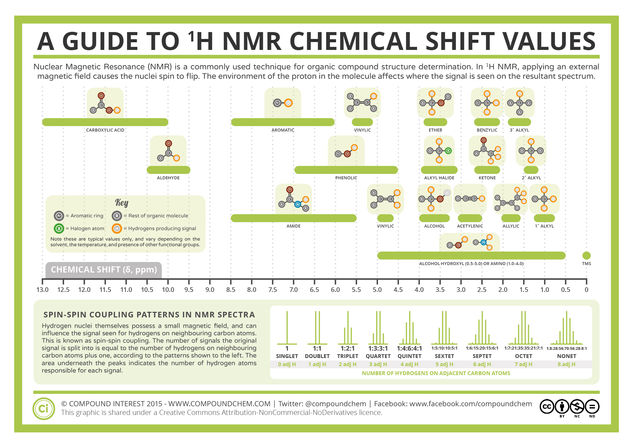© Compound InterestA Guide to Proton Nuclear Magnetic Resonance (NMR)
Today’s graphic is one for the chemists, with a guide to chemical shifts in proton nuclear magnetic resonance. At first glance, for those without a background in chemistry, this may well look largely nonsensical – however, if you’re interested in learning a little more about how chemists can work out the structures of organic compounds, read on below for an explanation that tries its best to be a simple one!
Looking at the graphics on the site, you may have wondered how chemists know that these are the structures of the particular organic (carbon-based) molecules being discussed. After all, molecules are incredibly small entities, so how can we possibly be so confident in knowing the precise arrangement of atoms within them? There are actually a number of techniques we can use to determine these arrangements – one of them is infrared spectroscopy, discussed previously – but by far the most important is nuclear magnetic resonance, or NMR spectroscopy.







